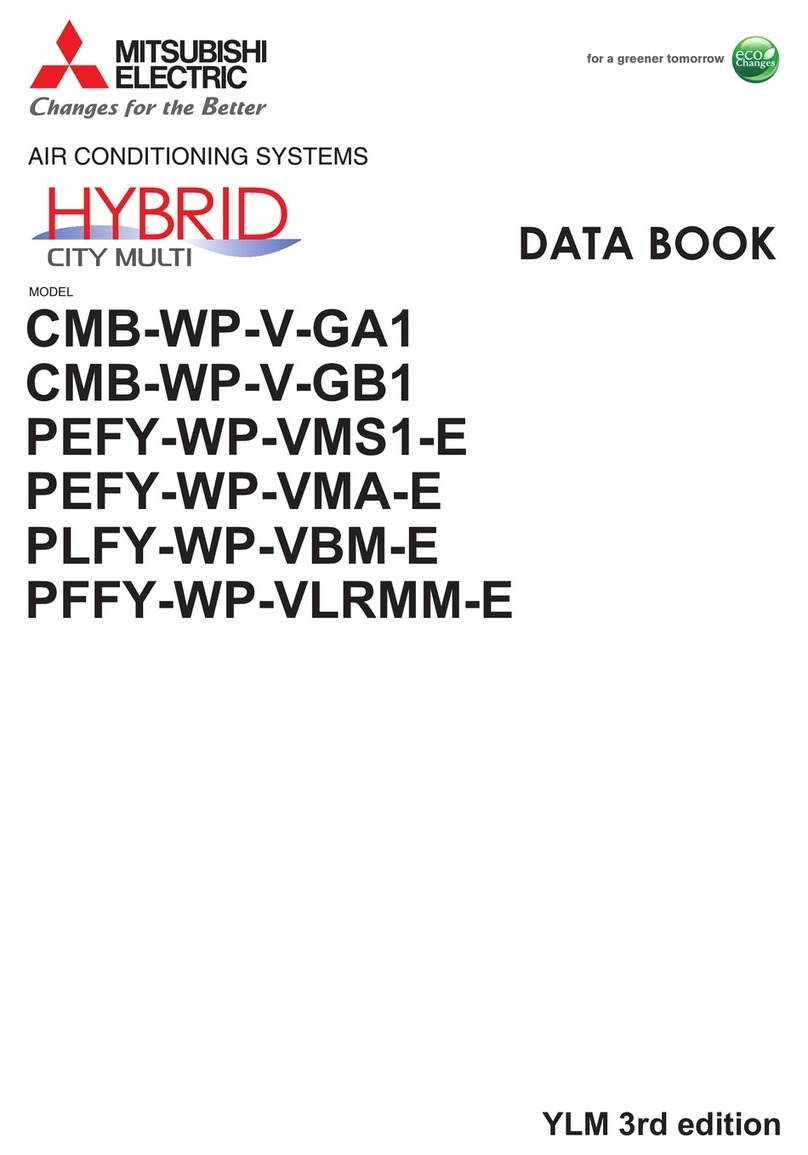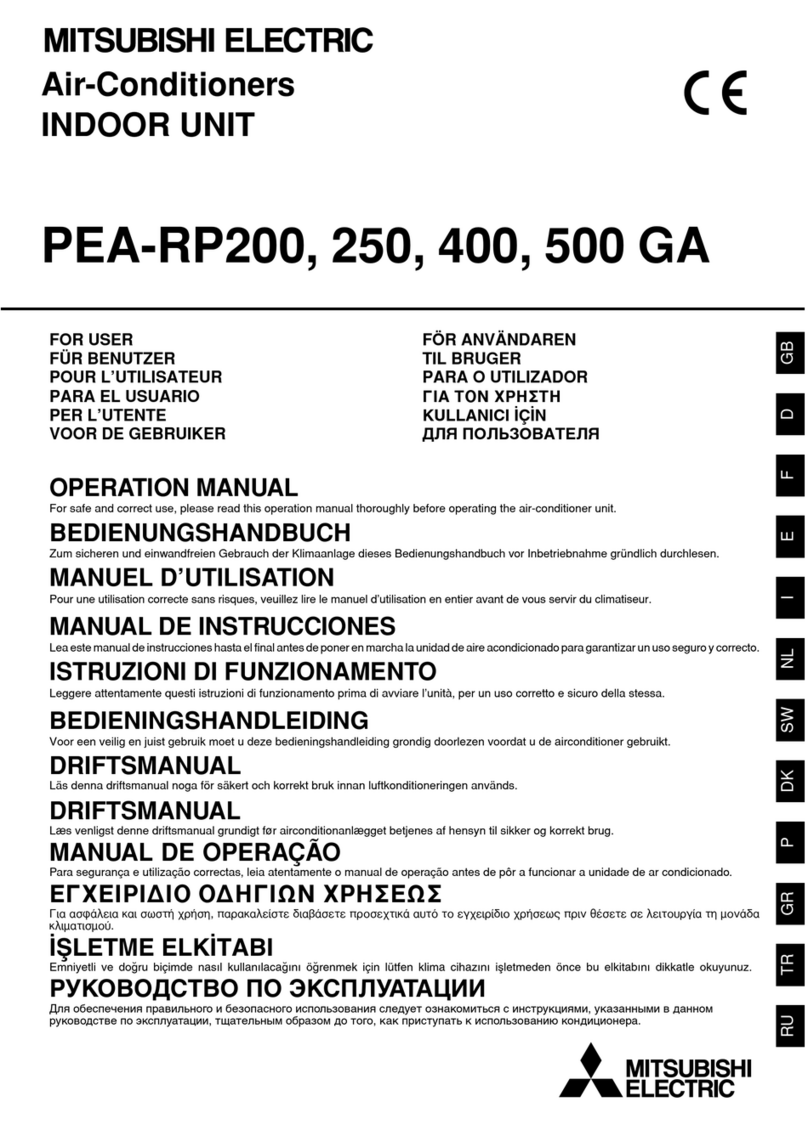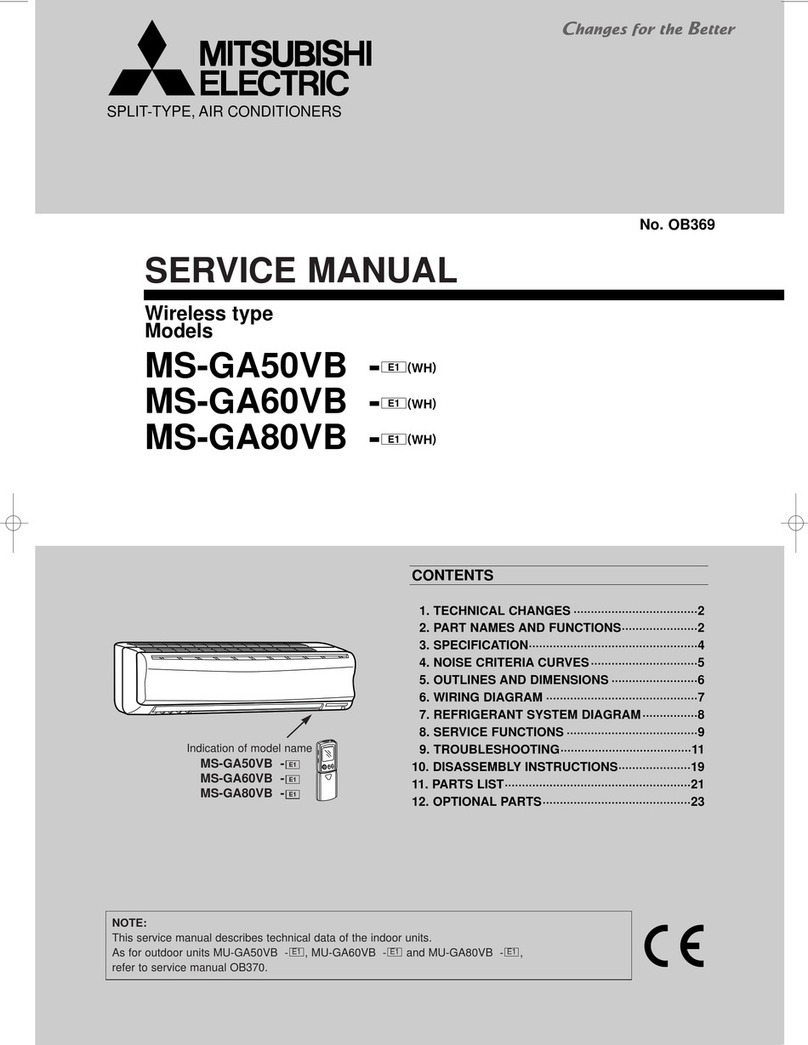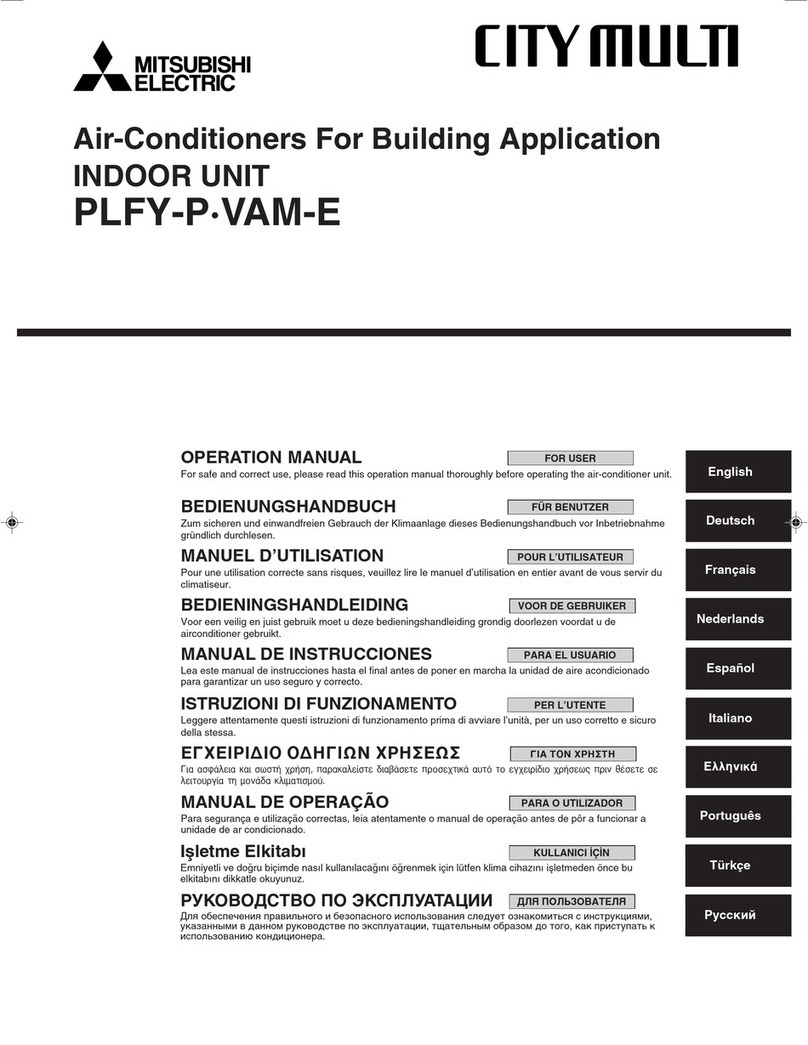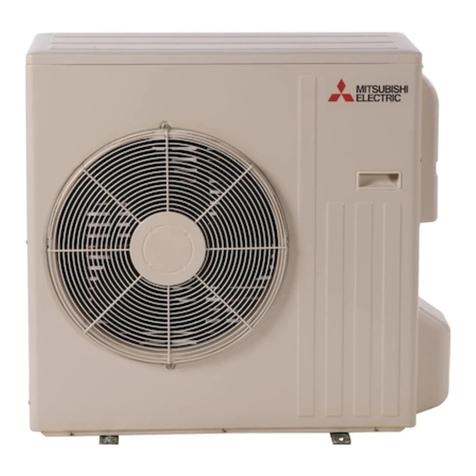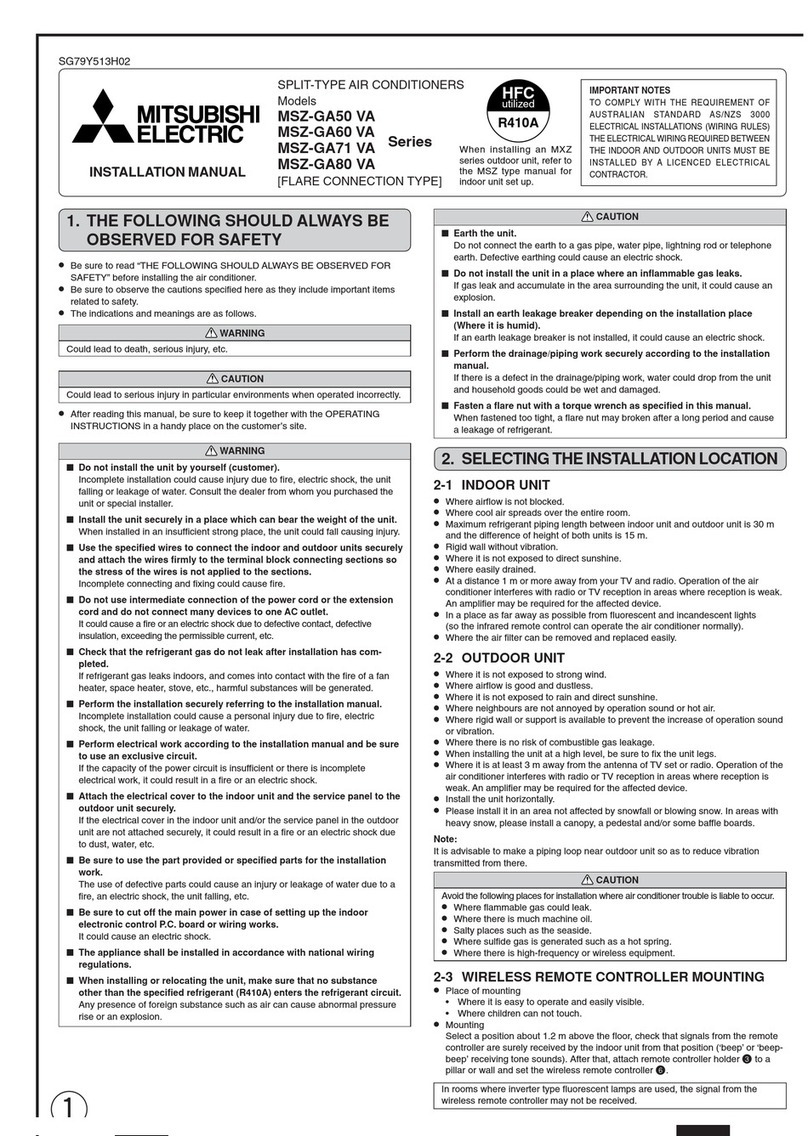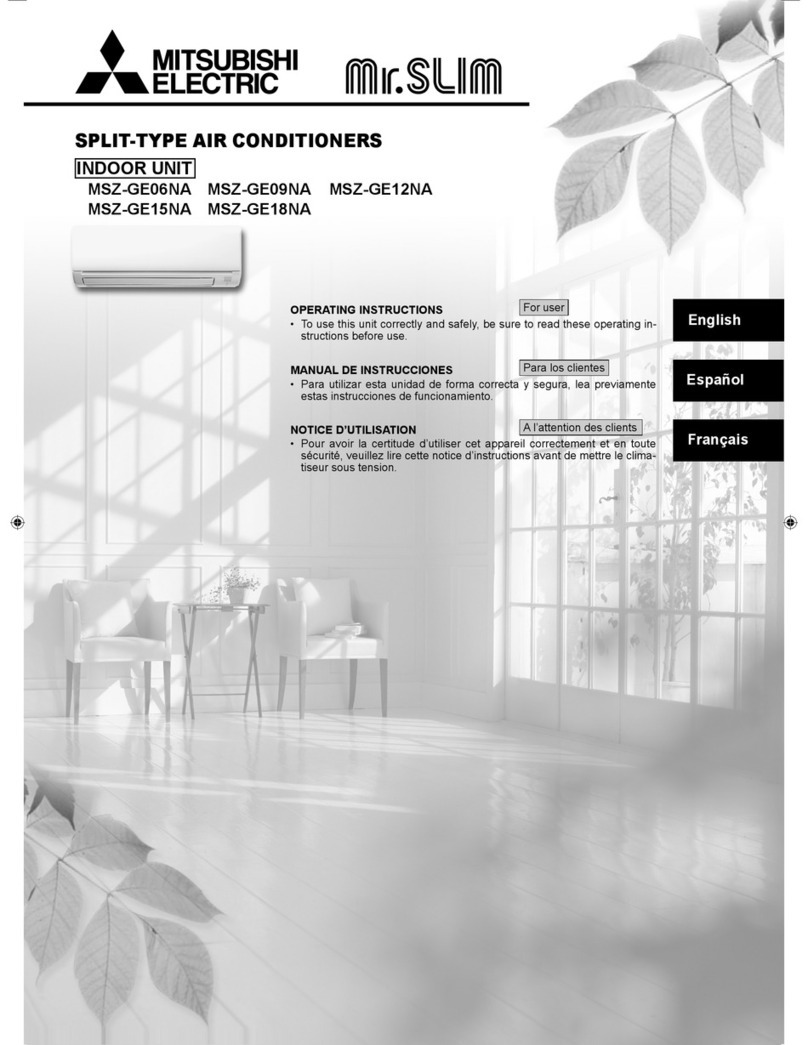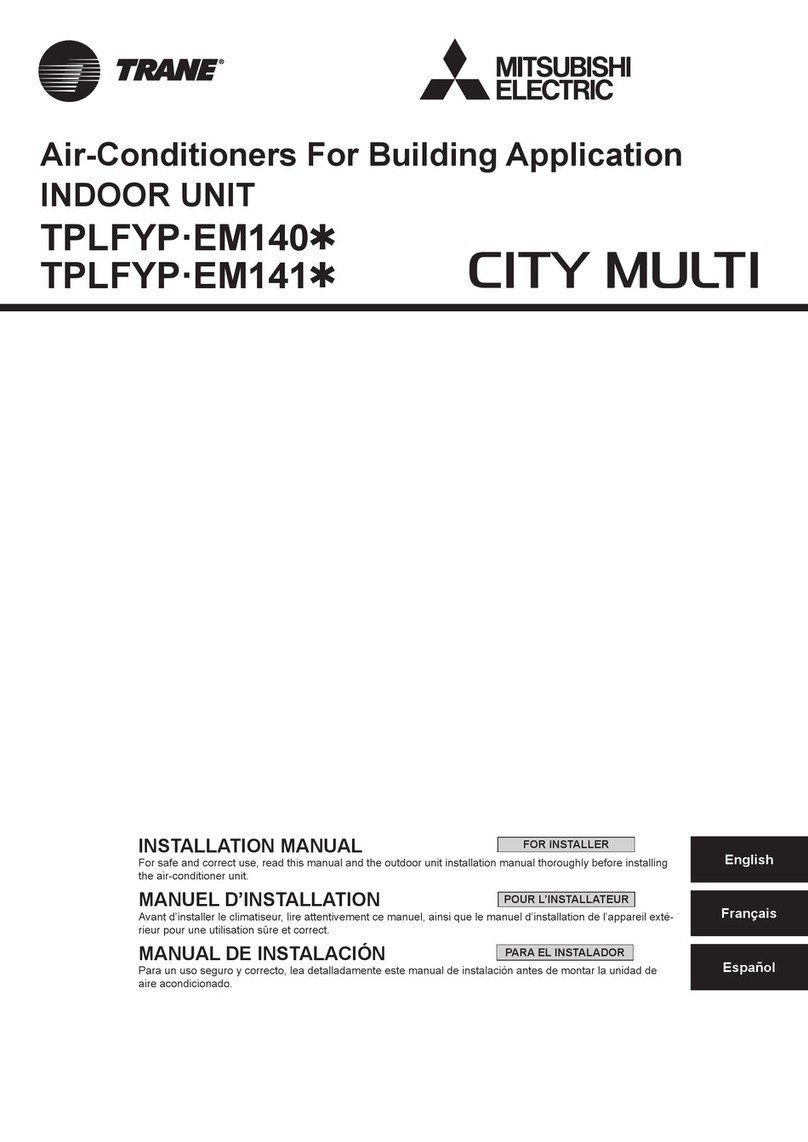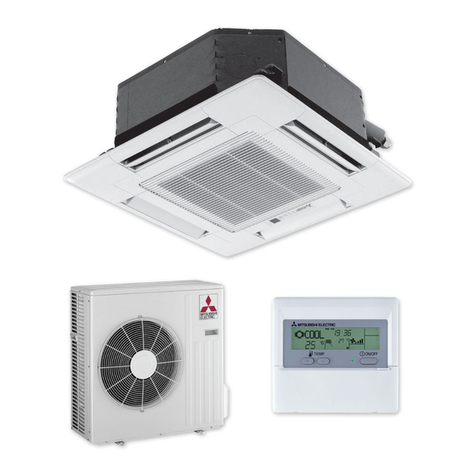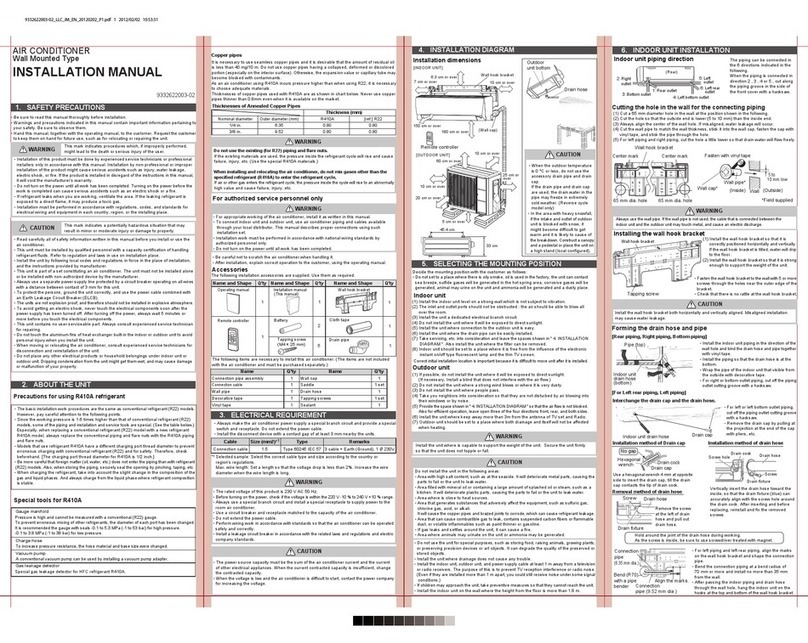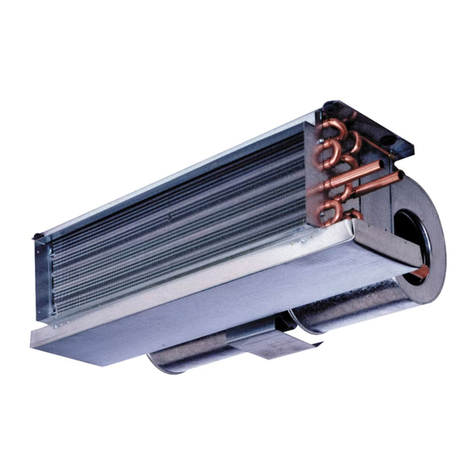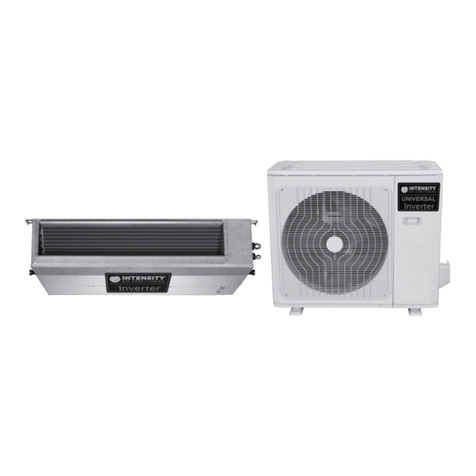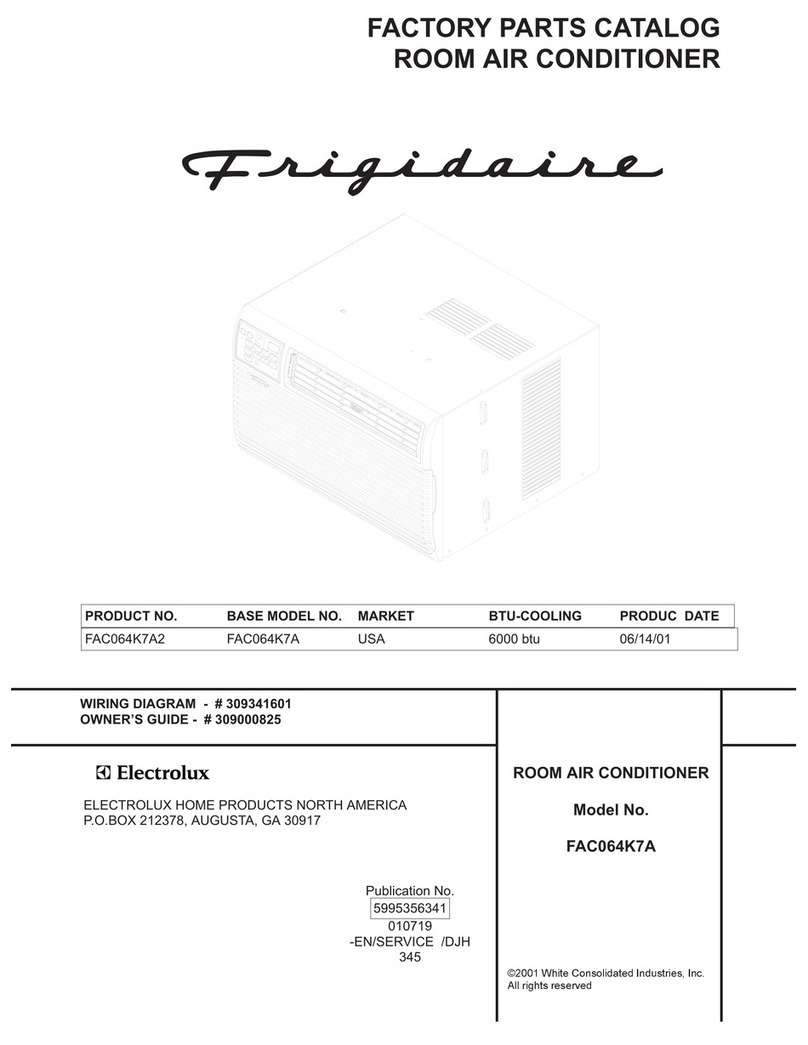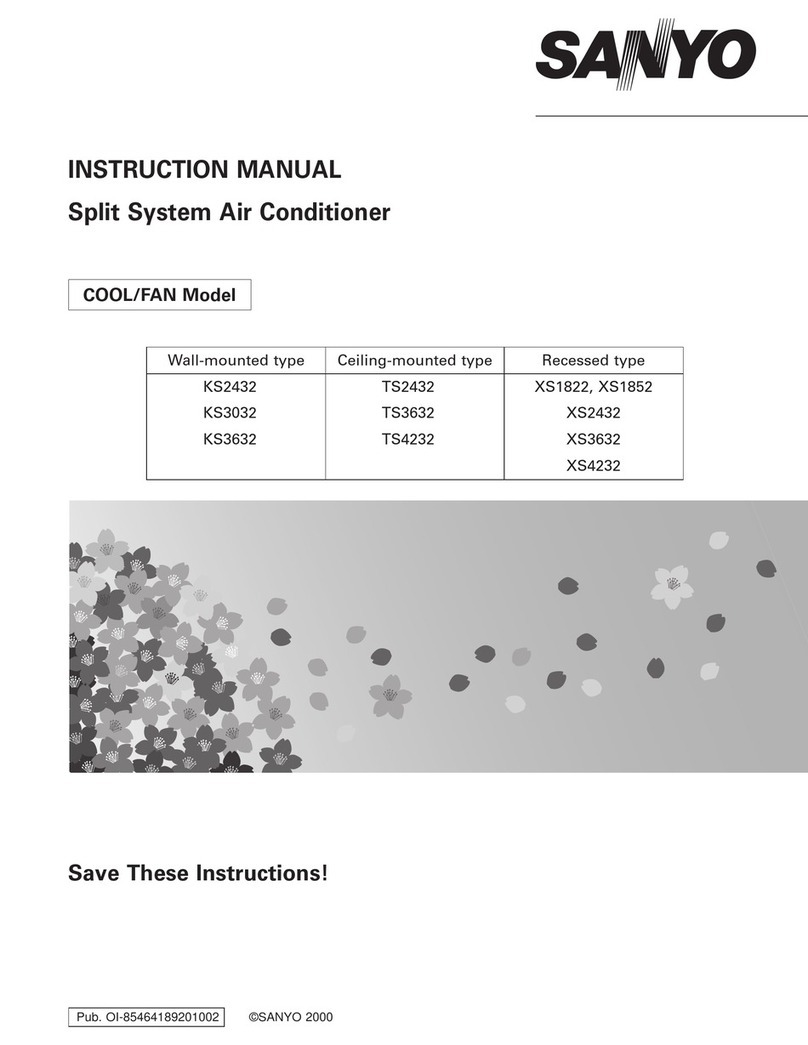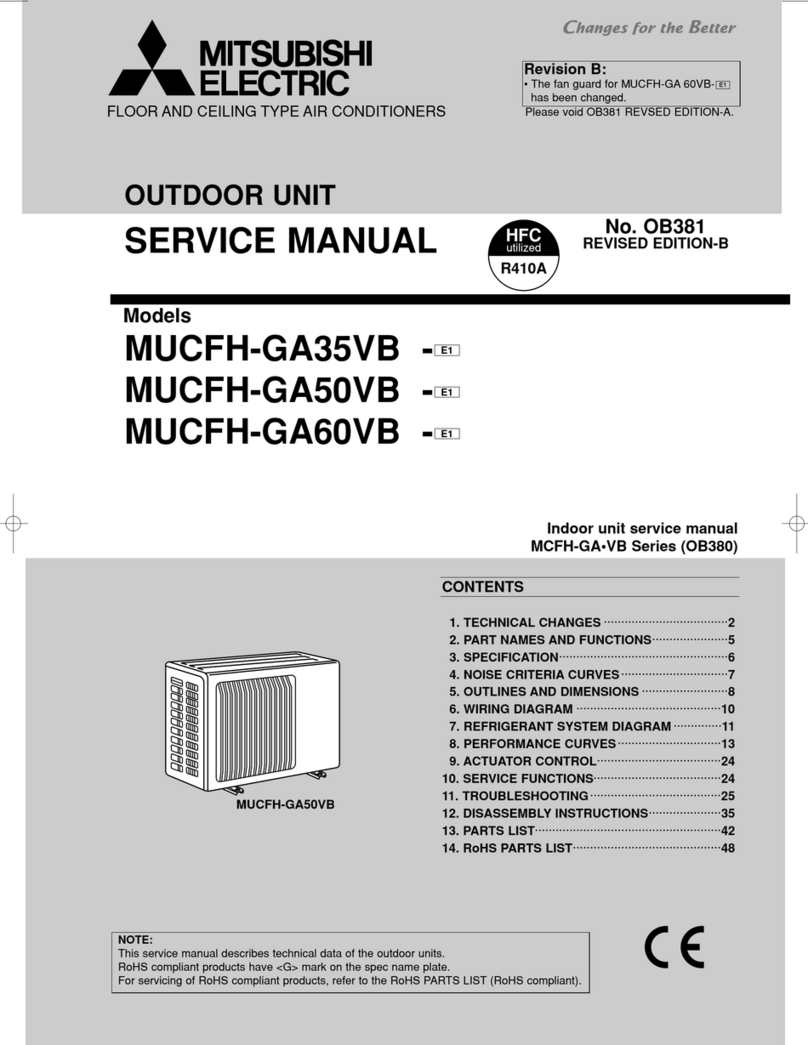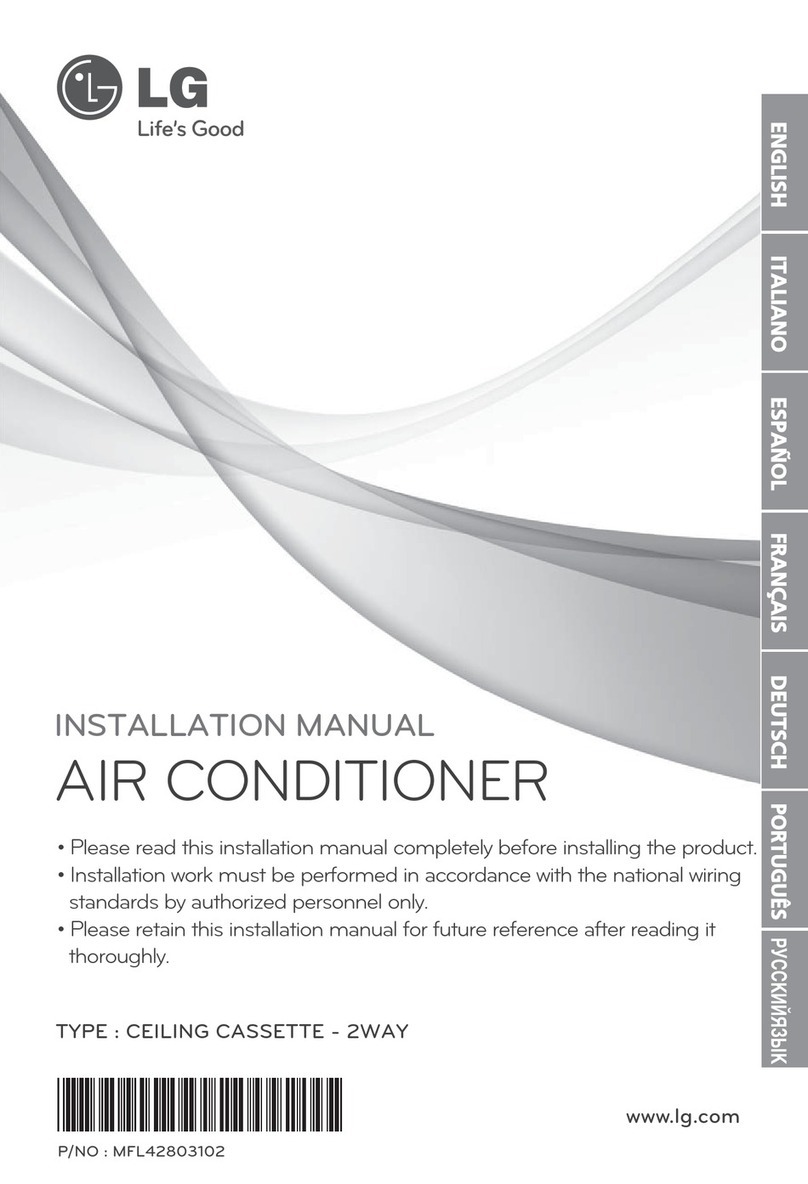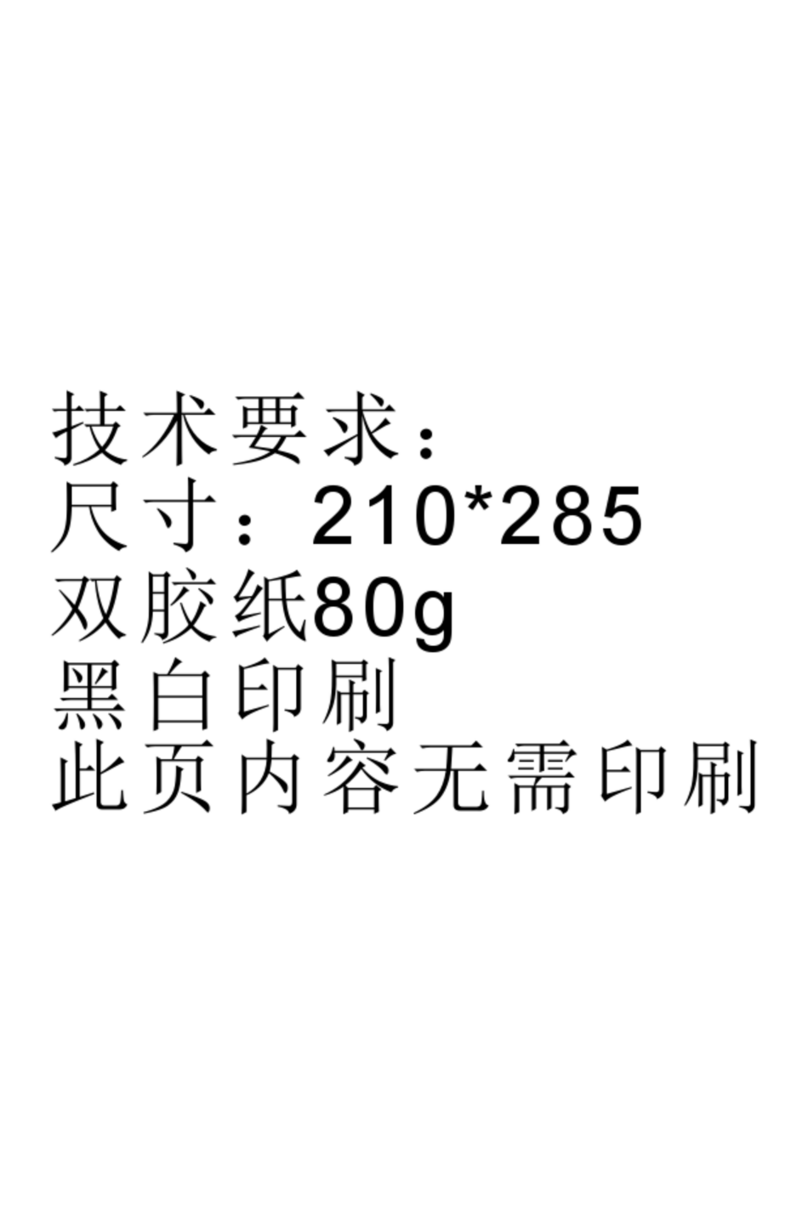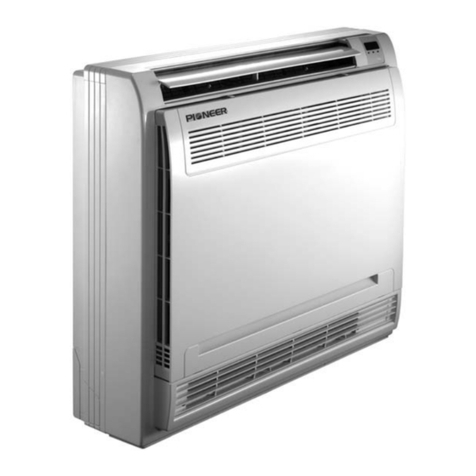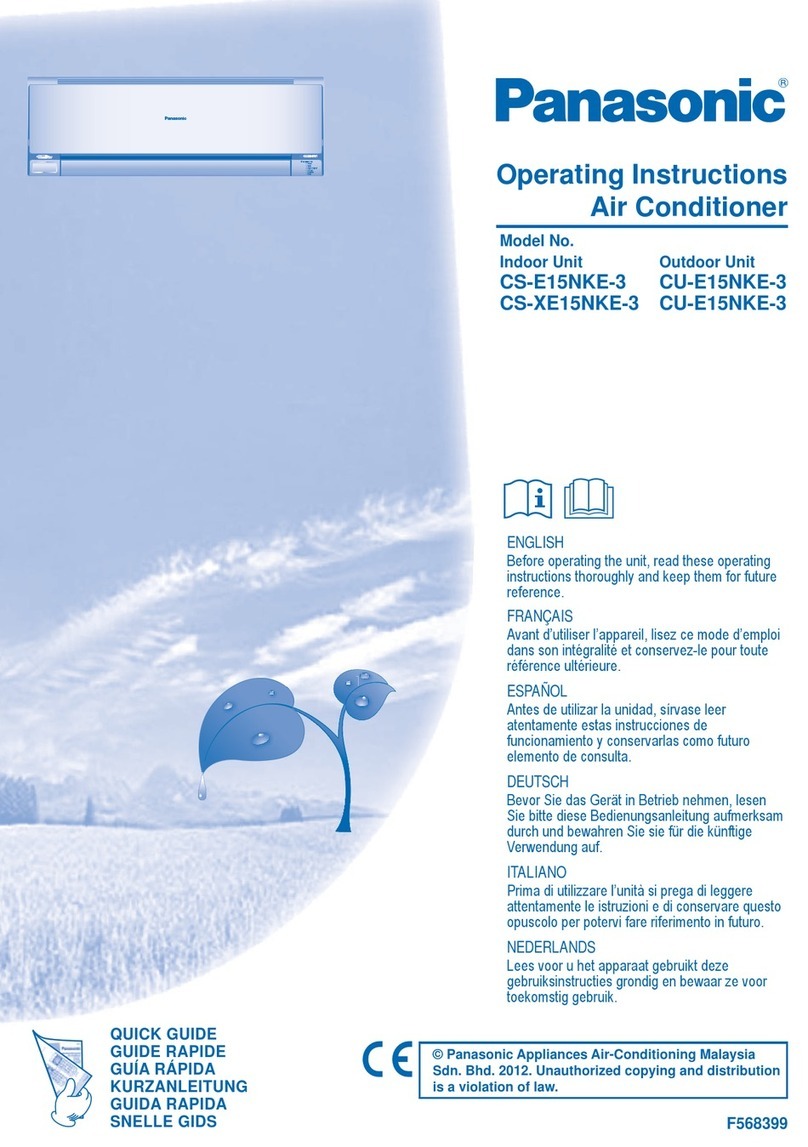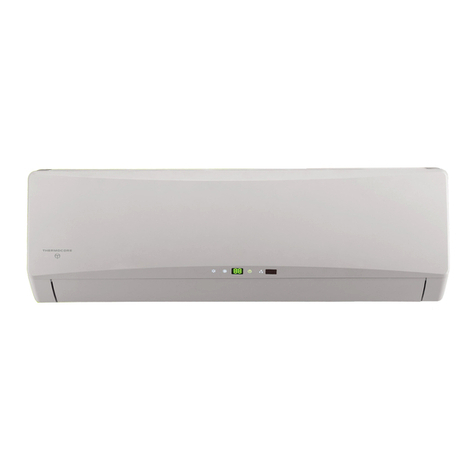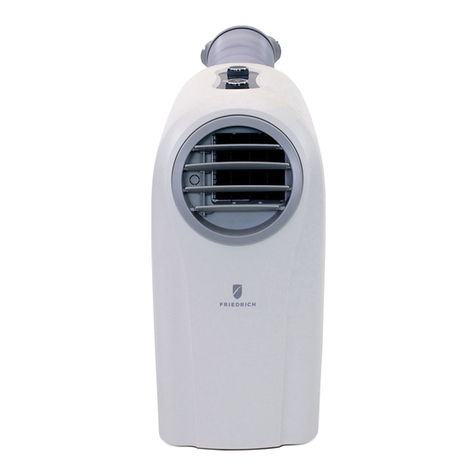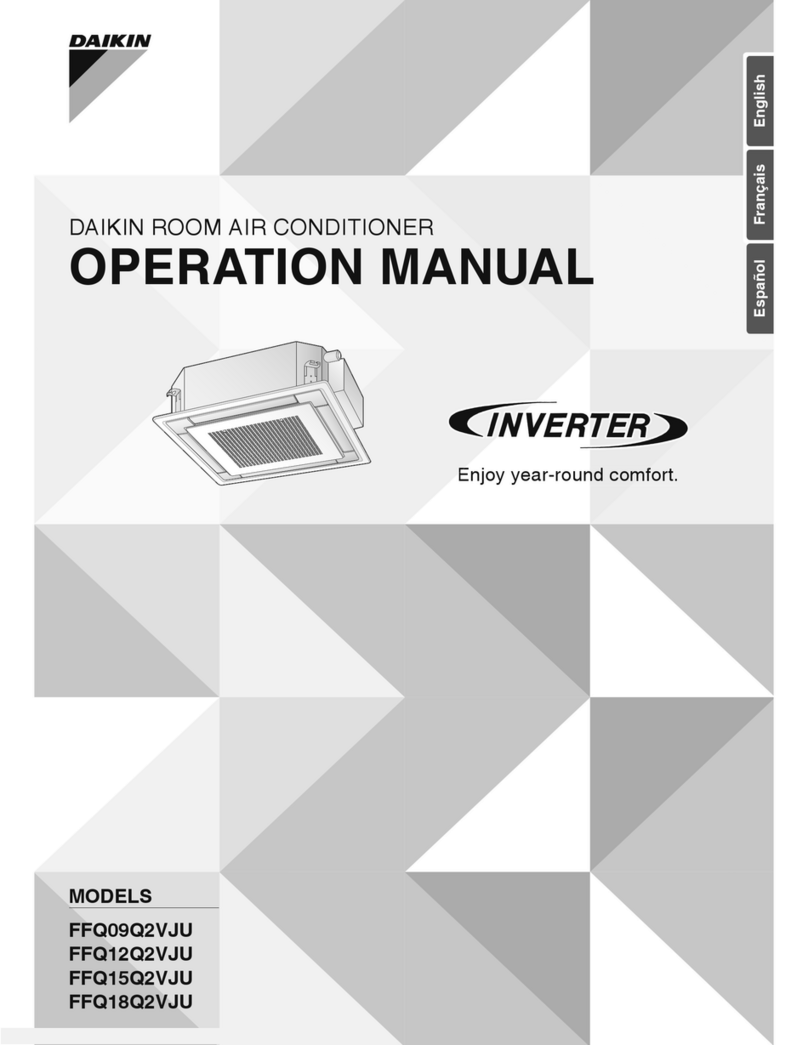
6
Note:
1. Safety precautions
1.1. Before installation and electric work
►Before installing the unit, make sure you read all the “Safety
precautions”.
►The “Safety precautions” provide very important points
regarding safety. Make sure you follow them.
Symbols used in the text
Warning:
Describes precautions that should be observed to prevent danger of injury
or death to the user.
Caution:
Describes precautions that should be observed to prevent damage to the unit.
Symbols used in the illustrations
Warning:
Carefully read the labels axed to the main unit.
Warning:
• Ask the dealer or an authorized technician to install the air conditioner.
• Install the air unit at a place that can withstand its weight.
• Use the specied cables for wiring. Make the connections securely so
that the outside force of the cable is not applied to the terminals.
• Prepare for typhoons and other strong winds and earthquakes and
install the unit at the specied place.
• Always use an air cleaner, humidier, electric heater, and other
accessories specied by MITSUBISHI ELECTRIC TRANE HVAC US LLC.
• Never repair the unit. If the air conditioner must be repaired, consult the
dealer.
• Do not touch the heat exchanger ns.
• When handling this product, always wear protective equipment.
EG: Gloves, full arm protection namely boiler suit, and safety glasses.
• If refrigerant gas leaks during installation work, ventilate the room.
• Install the air conditioner according to this Installation Manual.
• Have all electric work done by a licensed electrician according to
“Electric Facility Engineering Standard” and “Interior Wire Regulations”
and the instructions given in this manual and always use a special
circuit.
• Keep the electric parts away from water (washing water etc.).
• Securely install the outdoor unit terminal cover (panel).
• Do not use refrigerant other than the type indicated in the manuals
provided with the unit and on the nameplate.
• If the air conditioner is installed in a small room, measures must be
taken to prevent the refrigerant concentration from exceeding the safety
limit even if the refrigerant should leak.
• When moving and reinstalling the air conditioner, consult the dealer or
an authorized technician.
• After completing installation work, make sure that refrigerant gas is not
leaking.
• Do not reconstruct or change the settings of the protection devices.
• To dispose of this product, consult your dealer.
• Do not use a leak detection additive.
1.2. Precautions for devices that use R410A
refrigerant
Caution:
• Do not use the existing refrigerant piping.
• Use refrigerant piping made of C1220 (Cu-DHP) phosphorus deoxidized
copper as specied in the JIS H3300 “Copper and copper alloy seamless
pipes and tubes”. In addition, be sure that the inner and outer surfaces
of the pipes are clean and free of hazardous sulphur, oxides, dust/dirt,
shaving particles, oils, moisture, or any other contaminant.
Contents
5.2.
6.
6.1.
7.3.
9.4.
